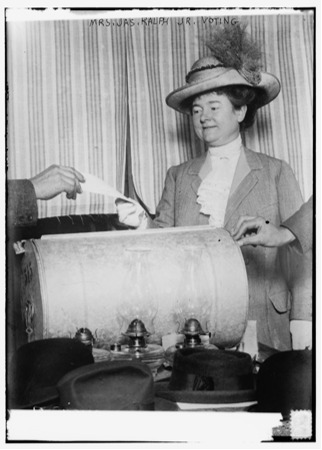The voting rights of Californians contracted and expanded over the course of the late nineteenth and early twentieth centuries. In 1879 California adopted a new state constitution which specifically disenfranchised “natives of China.” The state constitution was amended in 1894 to add an English literacy test: “no person who shall not be able to read the Constitution in the English language and write his or her name, shall ever exercise the privileges of an elector in this State.” In 1898 the US Supreme Court ruled in the case of US v. Wong Kim Ark that individuals born in the United States to immigrant parents were US citizens (Wong Kim Ark was a Californian born in San Francisco to Chinese immigrants). The Naturalization Act of 1870 and the Chinese Exclusion Act of 1882 passed by Congress, however, prevented Chinese individuals from immigrating to America and becoming naturalized citizens. The struggle for women’s suffrage had since the 1840s given rise to a number of different conventions, organizations, court cases and acts of civil disobedience. California’s women finally gained the right to vote in state and local elections in 1911 with the passage of Proposition 4.
